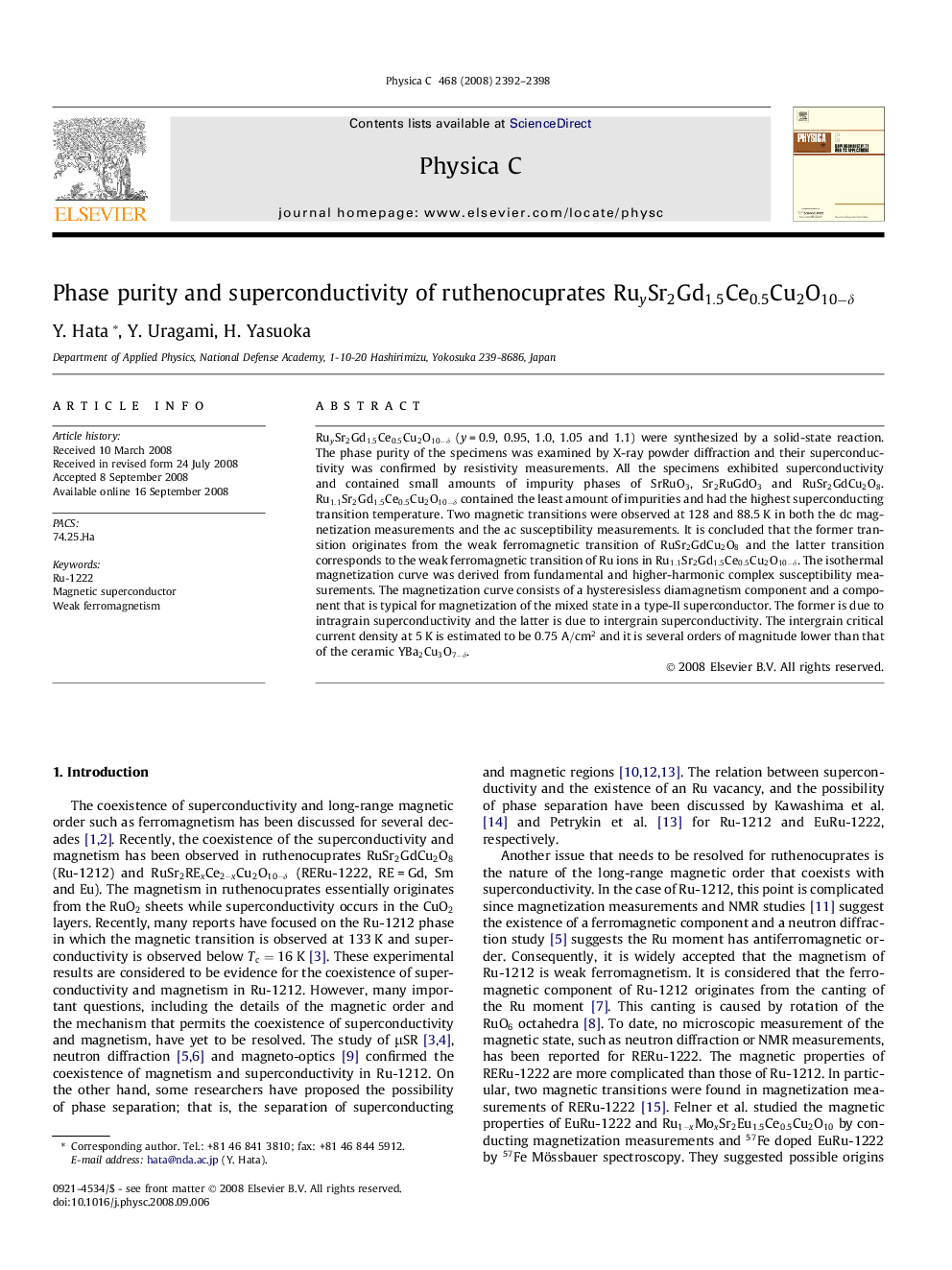| Article ID | Journal | Published Year | Pages | File Type |
|---|---|---|---|---|
| 1819022 | Physica C: Superconductivity and its Applications | 2008 | 7 Pages |
Abstract
RuySr2Gd1.5Ce0.5Cu2O10-δ (y = 0.9, 0.95, 1.0, 1.05 and 1.1) were synthesized by a solid-state reaction. The phase purity of the specimens was examined by X-ray powder diffraction and their superconductivity was confirmed by resistivity measurements. All the specimens exhibited superconductivity and contained small amounts of impurity phases of SrRuO3, Sr2RuGdO3 and RuSr2GdCu2O8. Ru1.1Sr2Gd1.5Ce0.5Cu2O10-δ contained the least amount of impurities and had the highest superconducting transition temperature. Two magnetic transitions were observed at 128 and 88.5 K in both the dc magnetization measurements and the ac susceptibility measurements. It is concluded that the former transition originates from the weak ferromagnetic transition of RuSr2GdCu2O8 and the latter transition corresponds to the weak ferromagnetic transition of Ru ions in Ru1.1Sr2Gd1.5Ce0.5Cu2O10-δ. The isothermal magnetization curve was derived from fundamental and higher-harmonic complex susceptibility measurements. The magnetization curve consists of a hysteresisless diamagnetism component and a component that is typical for magnetization of the mixed state in a type-II superconductor. The former is due to intragrain superconductivity and the latter is due to intergrain superconductivity. The intergrain critical current density at 5 K is estimated to be 0.75A/cm2 and it is several orders of magnitude lower than that of the ceramic YBa2Cu3O7-δ.
Related Topics
Physical Sciences and Engineering
Physics and Astronomy
Condensed Matter Physics
Authors
Y. Hata, Y. Uragami, H. Yasuoka,
